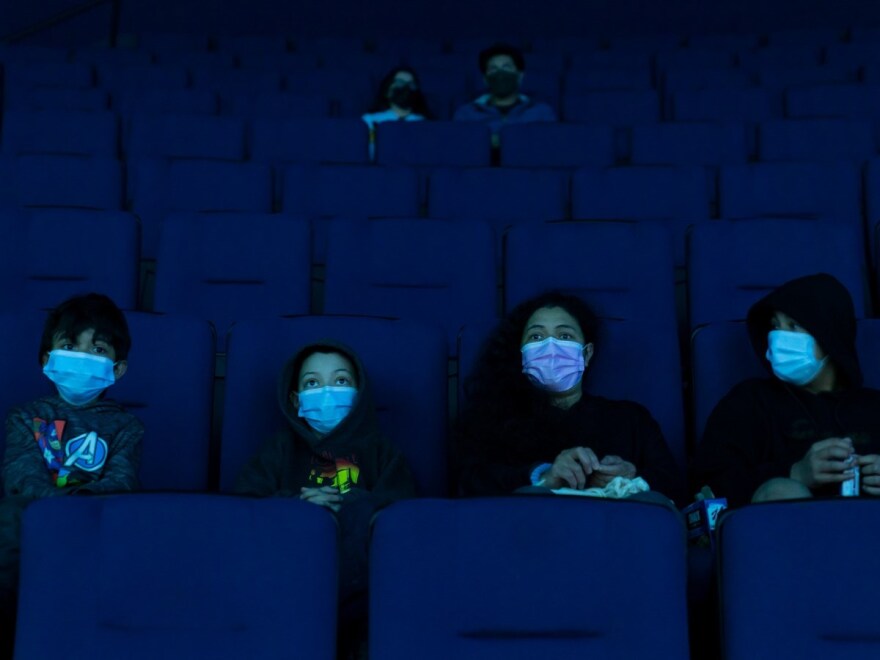Last November, as the weather grew colder and people began gathering indoors, California’s COVID-19 cases and hospitalizations ramped up with concerning speed. By January, hospitals were overwhelmed and more than 700 people were dying of the disease per day.
Those numbers gradually declined during the spring as vaccines became more available. Now, nearly 68% of Californians are fully or partially vaccinated, and experts say this will help protect us from another winter surge.
The toll of the pandemic this winter hinges on a lot of factors, including whether people follow public health recommendations, how soon young children become eligible for vaccination and whether a new variant emerges.
Experts say people should still be vigilant about attending gatherings — particularly with those who aren’t immunized. That includes all children under age 12, who still aren't eligible for any of the available vaccines.
Here are some tips for how to stay safe this autumn and winter.
What is the likelihood of another severe COVID-19 surge?
Experts are cautiously optimistic about the coming months, given that most people are immunized against the virus.
“In California, we have relatively high vaccination coverage and we're seeing the impact of that,” said UC Berkeley infectious disease specialist Dr. Lee Riley. “If this trend continues in other parts of the U.S. ... we should be able to avert another major surge from occurring during the winter season.”
But, we’re not in the clear. People who are immunized can still contract COVID-19 and spread it to others, though new research indicates they’re much less likely to infect others than people who are not vaccinated.
The delta variant seems to be subsiding, but there’s still the lingering threat of a new strain.
“So far, there's no evidence of this happening anywhere in the U.S.,” Riley said. “But … all the surges that we’ve had with the variants have all come in from other parts of the world. And so, we have to be wary of that in the coming months.”
What trends are we seeing with the delta variant now?
California’s cases have been declining since August, making experts hopeful that the worst of the delta variant is behind us. The current case rate is 7.7 per 100,000 people.By Thanksgiving last year that rate was hovering at 40.
Many counties saw a spike in cases in the summer, especially in Northern California. But the numbers are leveling out now — even in hard-hit areas such as Plumas and Inyo counties.
Riley says variants do tend to come and go, but it’s not clear to scientists exactly why.
“This happened with every variant that we've seen, regardless of what we do,” he said. “And so I think it just may be just a biological sort of feature of this virus.”
Is it safe to gather with friends and family?
Indoor gatherings increase the risk of spread for COVID-19. Outdoor gatherings are the safest option.
Because vaccinated people can still spread COVID-19, and unvaccinated people are especially vulnerable, indoor gatherings between people of mixed vaccination status carry a high risk.
“If you have any member of a household or a group of people who are not vaccinated ... they cannot be reassured that just because most members of the family, or most members of their close contacts are vaccinated, that they will not get infected,” Riley said.
The U.S. Centers for Disease Control and Prevention has released these holiday gathering recommendations:
- When gathering indoors, keep a window open and use a fan to circulate air
- Have unvaccinated people over age 2 wear a mask
- Maintain six foot distance as much as possible
- Make sure guests who feel sick stay home
- Wear a mask while traveling
- Self-quarantine for a full seven days after travel if you are not vaccinated
What precautions are needed around unvaccinated children?
Currently, only children 12 and older can be vaccinated for COVID-19. Vaccines may soon be available to children ages five and older. Find more information about children and vaccines here.
Children can be vectors for COVID-19. Riley says the likelihood that children will pick up the disease at school or during other activities depends on transmission rates in the community, and that safety measures should be taken when young children are around unvaccinated family members.
“As long as people continue to maintain the usual social distancing measures and wearing masks, we can probably mitigate the transmission from some kids to older adults,” he said.




